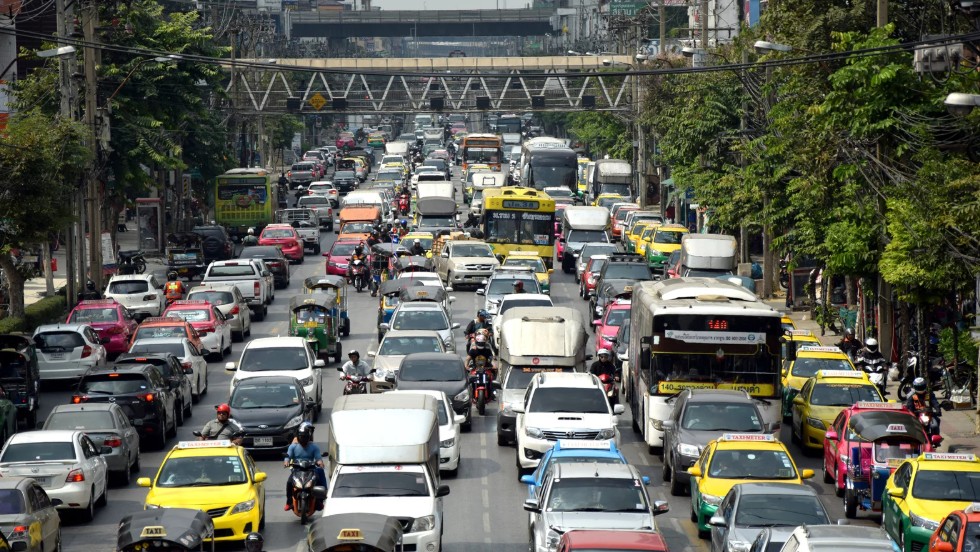Table of Contents
Have you ever been stuck in slow-moving traffic on a motorway, wondering why the congestion appeared out of nowhere?
Traffic bunching is a common issue that disrupts vehicle flow, causing delays, accidents, and excessive fuel consumption. So, what helps to reduce traffic bunching on a motorway? Factors like poor lane discipline, tailgating, and uneven traffic flow often lead to congestion.
However, modern technology and better traffic management strategies, such as smart motorways, variable speed limits, and Active Traffic Management (ATM), play a significant role in alleviating this problem.
In this blog, we’ll explore the causes of traffic bunching and the most effective solutions to tackle it, improving road safety and making your motorway journey smoother.
What Are Smart Motorways?
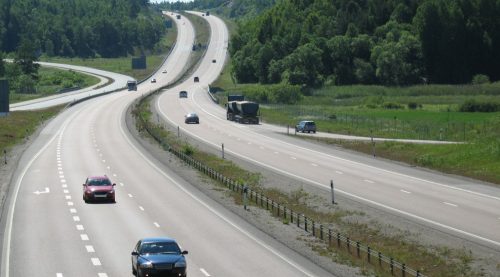
Smart motorways are innovative road systems designed to manage traffic more effectively by using technology and real-time data.
Unlike traditional motorways, smart motorways use tools such as overhead gantries, variable speed limits, and Active Traffic Management (ATM) systems to control the flow of traffic.
These motorways can dynamically respond to changing traffic conditions, making them a vital solution for reducing congestion and preventing traffic bunching.
Key features of smart motorways include:
- Variable speed limits displayed on electronic signs to regulate traffic flow and reduce sudden braking.
- Hard shoulder running, where the hard shoulder is opened as an additional lane during peak traffic times.
- Overhead gantries equipped with cameras and sensors to monitor traffic conditions and relay real-time information to drivers.
Smart motorways use advanced traffic monitoring to detect congestion and accidents, ensuring quicker interventions.
They improve traffic flow, reduce journey times, and enhance fuel efficiency while lowering carbon emissions. Drivers must remain attentive to road signs and variable speed limits for optimal performance.
What Is Traffic Bunching on a Motorway?
Traffic bunching refers to the clustering of vehicles in close proximity on a motorway, leading to reduced speeds and increased congestion.
It often occurs when vehicles travel too closely together, causing a ripple effect of sudden braking and acceleration. This disrupts the smooth flow of traffic and creates a chain reaction that can extend for miles.
Traffic bunching is a significant problem because it not only increases travel times but also heightens the risk of accidents. When vehicles are too close to each other, there is less time for drivers to react to sudden changes in speed or direction, leading to collisions. Moreover, stop-start driving caused by bunching results in higher fuel consumption and more emissions.
Common signs of traffic bunching include:
- Sudden and frequent braking.
- Uneven speeds across different lanes.
- Vehicles moving in dense clusters with little spacing.
Understanding the root causes of traffic bunching is the first step toward finding practical solutions. Let’s explore these causes in the next section.
What Causes Traffic Bunching on Motorways?
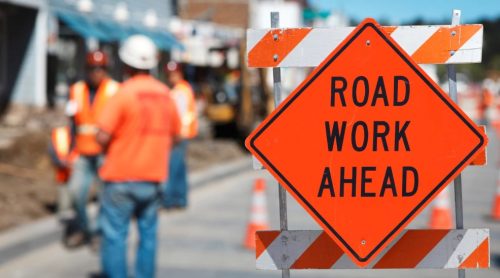
Traffic bunching on motorways is caused by a combination of driver behaviour, road conditions, and external factors.
Some of the most common causes include:
- Tailgating: When drivers follow too closely behind the vehicle in front, it reduces their reaction time and creates a domino effect of sudden braking.
- Sudden Lane Changes: Abruptly switching lanes can disrupt the flow of traffic and force other drivers to brake or adjust their speeds.
- Speeding and Erratic Driving: Driving at inconsistent speeds or ignoring traffic signs can lead to uneven traffic flow and bunching.
- Poor Lane Discipline: Failing to stay in the correct lane, such as hogging the middle lane, causes unnecessary congestion.
- External Factors: Roadworks, accidents, and bad weather conditions can all contribute to traffic bunching by limiting lane availability and slowing down traffic.
Addressing these issues requires a combination of technology, road management strategies, and responsible driving practices.
How Do Variable Speed Limits Reduce Traffic Congestion?
Variable speed limits are a key tool for managing traffic flow and reducing congestion on motorways. These limits are adjusted dynamically based on real-time traffic conditions, and the changes are displayed on electronic signs above each lane.
When traffic volume increases, speed limits are lowered to prevent vehicles from bunching up, allowing for smoother traffic flow and reducing the need for sudden braking.
The benefits of variable speed limits include improved safety by reducing the likelihood of collisions, reduced travel times through smoother traffic flow, and lower emissions due to consistent speeds that minimise fuel consumption.
Drivers must be attentive to these changing signs and adapt their speed to maintain the effectiveness of the system.
Smart motorways rely on this technology to effectively manage traffic congestion, promoting safer, more efficient driving while helping to prevent traffic bunching and reducing overall journey times.
What Helps to Reduce Traffic Bunching on a Motorway?
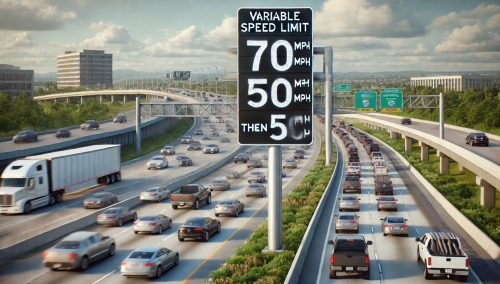
Reducing traffic bunching on motorways requires a combination of advanced technology, effective road management, and responsible driving behaviour. Some of the key measures include:
Smart Motorways
These systems incorporate various tools like variable speed limits, overhead gantries, and the use of hard shoulders to manage traffic flow.
By adjusting lane and speed availability based on real-time traffic data, smart motorways prevent congestion before it becomes a serious issue.
Active Traffic Management (ATM)
This system continuously monitors traffic conditions, identifying and responding to incidents in real time.
By redirecting traffic and adjusting speed limits immediately after an incident occurs, ATM reduces the likelihood of traffic bottlenecks forming.
Lane Usage Management
On smart motorways, lane availability can be dynamically adjusted depending on traffic volume. The ability to open or close lanes, including hard shoulders, ensures a more even distribution of vehicles across all lanes, reducing the risk of congestion.
Traffic Monitoring Technology
Advanced sensors and cameras are used to track traffic flow and identify potential slowdowns. The data gathered is utilised to make timely decisions on speed limits and lane closures, helping to avoid bottlenecks before they occur.
Electronic Signage
Real-time updates on speed limits, lane closures, and incident warnings are displayed on large electronic signs. These signs guide drivers to slow down, change lanes, or adjust their speed, which helps maintain a steady flow of traffic and prevent congestion.
These measures, when implemented together, can significantly improve traffic flow and create safer, more efficient motorways.
What Role Does Active Traffic Management (ATM) Play in Reducing Bunching?

Active Traffic Management (ATM) is a system designed to optimise traffic flow and reduce congestion on motorways.
It uses a combination of technology, road signs, and real-time data to manage traffic conditions dynamically.
Key components of ATM include:
- Hard Shoulder Running: Opening the hard shoulder as an additional lane during peak traffic times.
- Lane Closures: Managing lane availability to direct traffic around incidents or roadworks.
- Overhead Gantries: Displaying real-time updates, such as variable speed limits and lane closures.
ATM systems are highly effective in preventing traffic bunching by addressing bottlenecks and ensuring even distribution of traffic across lanes.
Drivers must follow the instructions displayed on overhead gantries to ensure these systems work effectively.
What Is the Role of Smart Motorways in Managing Traffic Flow?
Smart motorways play a critical role in managing traffic flow and reducing congestion. By leveraging technology and real-time data, they enable proactive responses to changing traffic conditions.
Features of smart motorways include
- Variable Speed Limits: Adjusting speeds based on traffic volume.
- Traffic Monitoring Systems: Using cameras and sensors to detect incidents and respond quickly.
- Driver Guidance: Providing real-time information through overhead gantries to help drivers make informed decisions.
By ensuring smoother traffic flow, smart motorways reduce travel times, improve safety, and lower environmental impact.
Why Is Lane Discipline Important on Motorways?
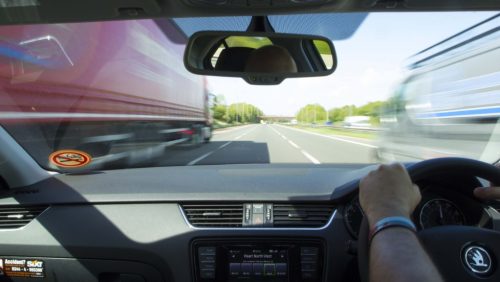
Lane discipline is crucial for maintaining smooth traffic flow and preventing congestion on motorways.
When drivers stick to their designated lanes and avoid unnecessary lane changes, it reduces the risk of accidents and traffic bunching.
Key points to consider:
- Always use the left lane for normal driving and the middle or right lanes for overtaking.
- Avoid “hogging” the middle lane, as this can block faster-moving traffic and create bottlenecks.
- Maintain a safe following distance to allow for smooth lane changes and braking.
Promoting lane discipline through education and enforcement can have a significant impact on reducing traffic congestion.
How To Drive Safely on A Smart Motorway?
Driving safely on a smart motorway requires awareness and adherence to the displayed road signs and speed limits.
Here are some essential tips for driving safely on smart motorways:
- Observe Variable Speed Limits: Always adjust your speed according to the displayed speed limits, which change based on traffic flow and conditions.
- Avoid Tailgating: Maintain a safe distance between your vehicle and the one ahead to allow for smooth braking and to avoid sudden congestion.
- Stay Alert for Updates: Pay attention to overhead gantries for important information like lane closures or speed limit changes.
- Use the Hard Shoulder Only When Directed: The hard shoulder may be used for traffic in certain situations, but only when indicated by road signs. Always return to the regular lanes when it is no longer available.
By following these guidelines, you can ensure your safety while contributing to smoother traffic flow on smart motorways.
What Are the Long-Term Benefits of Reducing Traffic Bunching on Motorways?
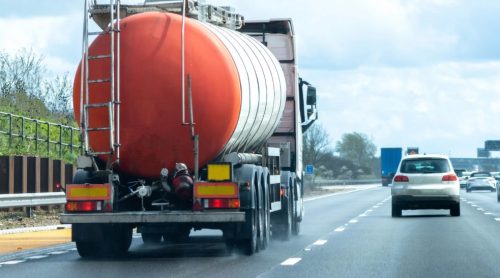
Reducing traffic bunching offers several long-term benefits, including:
- Improved Journey Times: Smoother traffic flow reduces delays and makes journeys more predictable.
- Enhanced Safety: Fewer accidents occur when traffic moves steadily without sudden braking or erratic behaviour.
- Environmental Benefits: Lower fuel consumption and reduced emissions contribute to a cleaner environment.
- Cost Savings: Reduced wear and tear on vehicles and roads lower maintenance costs for both drivers and authorities.
By addressing the causes of traffic bunching, we can create a more efficient and sustainable transport system.
Conclusion
Traffic bunching on motorways is a major challenge, but it can be effectively addressed through technology, road management, and driver awareness.
Smart motorways, variable speed limits, and Active Traffic Management (ATM) systems have proven to be powerful tools in reducing congestion and ensuring safer journeys.
As drivers, we also have a responsibility to maintain lane discipline, avoid tailgating, and follow traffic management guidelines. Together, these measures can create a smoother, more efficient motorway experience for everyone.
Let’s make our journeys stress-free, safer, and more environmentally friendly by adopting these solutions and staying proactive on the road.
FAQs
How do variable speed limits work on smart motorways?
Variable speed limits are adjusted in real time based on traffic conditions and displayed on overhead signs. They help maintain a smooth traffic flow by preventing sudden braking.
What is the main difference between a smart motorway and a traditional motorway?
Smart motorways use technology such as variable speed limits, overhead gantries, and traffic monitoring systems to manage traffic, unlike traditional motorways.
Why does tailgating increase the risk of traffic bunching?
Tailgating reduces the reaction time for drivers, leading to sudden braking and creating a ripple effect that causes traffic bunching.
Can road signs and overhead gantries reduce congestion?
Yes, real-time updates on road signs and gantries guide drivers and help manage traffic flow, reducing congestion.
How does poor lane discipline cause traffic congestion?
Improper use of lanes, such as hogging the middle lane, disrupts traffic flow and creates bottlenecks.
What are the penalties for not following traffic management systems on motorways?
Penalties include fines and points on your licence for ignoring variable speed limits, lane closures, or other traffic management instructions.
Are smart motorways environmentally friendly?
Yes, by promoting smoother traffic flow, smart motorways reduce fuel consumption and carbon emissions, making them environmentally friendly.




